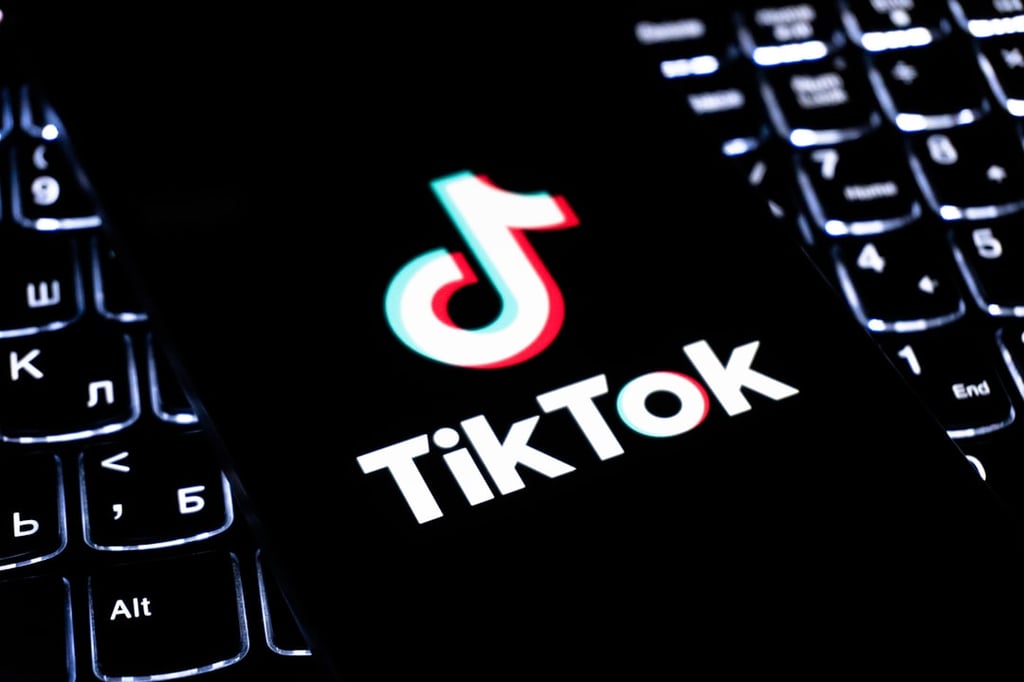The touch-tablet market is still in its cradle and already
Applehas won. The
iPadnow has a lead so vast that it will not and cannot be dislodged from its position of dominance.
Fans of competing platforms don’t want to hear this, of course.
The Google Android faction believes that — finally! — a real, shipping tablet-specific version of open-source Android exists, so a tsunami of iPad-killer Android devices will now quickly overwhelm and surpass the iPad. This is wishful thinking based on a false belief, an inadequate appreciation for the primacy of apps and the destructive power of platform fragmentation.
The tablet version of Android, version 3.0 (formerly known by its codename, “Honeycomb”), is neither “real,” “shipping” nor “open source.”
While Google bizarrely uses or doesn’t use the word “beta” for marketing expediency rather than any meaningful description of development phase, “Android 3.0” is just the marketing label Google slapped on the beta version of the OS code-named “Ice Cream Sandwich,” which is still months away.
The source code for Android 3.0 was withheld from public release because it wasn’t finished. The software is being very selectively released to a handful of hardware partners, who have promised to keep it secret.
Software that has never been made public cannot be called “open source.” It’s as closed right now as Apple’s iOS.
Google rushed Android 3.0 to market prematurely to enable the launch of the Motorola Xoom. They’ve also released it to a smattering of other developers, just like Microsoft has with Windows 8, also in closed beta. But unlike the normal process for Android, the OS has not been publicly released like previous Android builds because, according to Google itself, Android 3.0 is not finished yet.
Google made this exception with the belief that the Xoom would catapult Android tablets into the stratosphere. It’s not going to happen.
Motorola sold far fewer units than previously thought, possibly as few as 25,000 or as many as 125,000. This is bad because Motorola has probably already manufactured more than 500,000 of them.
That excess inventory will be difficult to unload, because now other Android 3.0 tablets have recently entered the market (the tight network of OEMs that Google has selected to get the closed beta), including the ASUS Eee Pad Transformer, Acer Iconia Tab A500, Motorola Xoom and T-Mobile G-Slate. Sony has announced two Android 3.0 tablets shipping in the Fall. And non-Android tablets will be shipping this year.
Motorola will be forced to unload all this excess inventory by insane discounts, which will create downward price pressure on the entire Android tablet market, erasing profit margins.
RIM has sold between 45,000 and 100,000 BlackBerry PlayBook tablets, according various estimates. It shipped April 19, and some 25,000 people pre-ordered it. The PlayBook runs a brand-new operating system called the BlackBerry Tablet OS. The company says PlayBook will be able to run Android Apps, which both removes an incentive for developers to write native PlayBook apps while simultaneously contributing to Android fragmentation.
Like Android 3.0, the PlayBook was shipped before it was ready. The device doesn’t even have an e-mail app, although users can do e-mail via Gmail or other online e-mail services. Android app support has been promised for “sometime this summer.”
Even the SDK that would enable developers to create PlayBook native apps has not been released. No native apps. No Android apps.
HP is shooting for summer to ship its Palm WebOS 3 TouchPad tablet. We still don’t know whether the TouchPad will ship before its ready, like Android 3.0 and the PlayBook.
No Comparison
So let’s contrast the state of the iPad with the non-iPad tablet universe. The iPad is now in its second year of shipping, and second generation of tablet. The iPad is very mature, stable and popular. Apple will probably sell well over 30 million of them this year.
Meanwhile, there is still no complete, “shipping,” ready-for-prime-time tablet platform competitor on the market. Not one. Android 3.0 isn’t finished. The BlackBerry PlayBook isn’t finished. The Palm TouchPad isn’t shipping.
But that stark and inexplicable truth isn’t why iPad can’t be touched. The elephant in the living room is apps. Where are the apps?
Why Apps Are Destiny
As Android, RIM and HP tablets slowly come online, sales will be stunted by the conspicuous absence of apps designed for these tablet platforms.
As of this writing, there are probably fewer than 200 apps created specifically for the tablet version of Android. There are zero PlayBook apps, and zero TouchPad apps.
And how many apps designed for the iPad? I count 82,670 in the iTunes App Store.
Of course, the current imbalance in app availability is irrelevant. What matters is the future. And the future looks grim.
A recent Appcelerator and IDC survey found that among potential developers, the number who say they are “very interested” in developing for Android tablets has fallen three points, from 74 to 71 percent in just the past three months. Compare this with 86 percent who were “very interested” in developing for iPad.
One of the reasons given was fragmentation. There are currently multiple OS versions and multiple form factors that developers have to design for. Some 63 percent of survey respondents said fragmentation is the biggest risk to the platform.
Another problem is app store confusion. Google has failed to create a cohesive, single app store, so everyone is rushing in with their own apps stores, including Amazon.com.
And yet another issue is the “monetizationability” of Android apps. The iOS user base is far more likely to pay real money for an app than Android users. On Android, well over half of all apps are free. On the iPad, the number is well under one-third.
So you can see how there is a huge disconnect between Android users and Android developers. Android users love the wide choice in Android hardware. Developers hate it. Android users love the fact that most Android apps are free. Developers hate it.
The very attributes that make users think Android is unstoppable are the very attributes that will stop it.
At least there’s one point of agreement: Android users hate the fact that there are so many app stores, and that those app stores make it difficult to surface great apps. And Developers hate that too.
You can see why developers are cooling on Android. Their choice is to ship on the iPad, where the device is well understood, market share is north of 80 percent and users readily pay real money for apps. Or they can ship on Android, where their app must be optimized for many devices, will be buried in several confusing app stores and they’ll never make any money. Very few developers will release exclusively or even initially on Android.
These forces are self-reinforcing. The more apps, the more users. The more users, the more apps.
Of course, competing platforms will always exist. But they’ll exist on the margins, outside the mainstream, for power users and special-purpose usage models.
Apple owns the mainstream of touch-tablets, and will continue to do so for at least another decade. The Apple iPad is the Windows of our generation — the dominant platform that simply can’t be killed.
-
Huawei’s AI Update: Things Are Moving Faster Than We Think
FEATURE | By Rob Enderle,
December 04, 2020
-
Keeping Machine Learning Algorithms Honest in the ‘Ethics-First’ Era
ARTIFICIAL INTELLIGENCE | By Guest Author,
November 18, 2020
-
Key Trends in Chatbots and RPA
FEATURE | By Guest Author,
November 10, 2020
-
Top 10 AIOps Companies
FEATURE | By Samuel Greengard,
November 05, 2020
-
What is Text Analysis?
ARTIFICIAL INTELLIGENCE | By Guest Author,
November 02, 2020
-
How Intel’s Work With Autonomous Cars Could Redefine General Purpose AI
ARTIFICIAL INTELLIGENCE | By Rob Enderle,
October 29, 2020
-
Dell Technologies World: Weaving Together Human And Machine Interaction For AI And Robotics
ARTIFICIAL INTELLIGENCE | By Rob Enderle,
October 23, 2020
-
The Super Moderator, or How IBM Project Debater Could Save Social Media
FEATURE | By Rob Enderle,
October 16, 2020
-
Top 10 Chatbot Platforms
FEATURE | By Cynthia Harvey,
October 07, 2020
-
Finding a Career Path in AI
ARTIFICIAL INTELLIGENCE | By Guest Author,
October 05, 2020
-
CIOs Discuss the Promise of AI and Data Science
FEATURE | By Guest Author,
September 25, 2020
-
Microsoft Is Building An AI Product That Could Predict The Future
FEATURE | By Rob Enderle,
September 25, 2020
-
Top 10 Machine Learning Companies 2020
FEATURE | By Cynthia Harvey,
September 22, 2020
-
NVIDIA and ARM: Massively Changing The AI Landscape
ARTIFICIAL INTELLIGENCE | By Rob Enderle,
September 18, 2020
-
Continuous Intelligence: Expert Discussion [Video and Podcast]
ARTIFICIAL INTELLIGENCE | By James Maguire,
September 14, 2020
-
Artificial Intelligence: Governance and Ethics [Video]
ARTIFICIAL INTELLIGENCE | By James Maguire,
September 13, 2020
-
IBM Watson At The US Open: Showcasing The Power Of A Mature Enterprise-Class AI
FEATURE | By Rob Enderle,
September 11, 2020
-
Artificial Intelligence: Perception vs. Reality
FEATURE | By James Maguire,
September 09, 2020
-
Anticipating The Coming Wave Of AI Enhanced PCs
FEATURE | By Rob Enderle,
September 05, 2020
-
The Critical Nature Of IBM’s NLP (Natural Language Processing) Effort
ARTIFICIAL INTELLIGENCE | By Rob Enderle,
August 14, 2020
SEE ALL
ARTICLES







